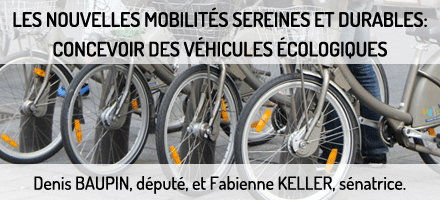TimesOnLine : ‘Napoleon’ Sarkozy plots a fantasy Paris
![]() The president’s grandiose plans to rebuild the city are drawing scorn by Matthew Campbell, Paris
The president’s grandiose plans to rebuild the city are drawing scorn by Matthew Campbell, Paris
PLANS by President Nicolas Sarkozy to build a “Greater Paris” have been condemned by opponents who question the wisdom of unveiling one of the most audacious urban projects in recent memory in the midst of a global recession.
A ceremony was held last week in which architects from around the world presented their proposals to build a new metropolitan Paris. Sarkozy studiously avoided the question of where the French government would find the money to realise his dream of creating the world’s first “postKyoto” city, a reference to the treaty on climate change.
“It’s all grandstanding,” said Denis Baupin, a Green party official in the Paris town hall, adding that “President Bling-Bling”, as Sarkozy is sometimes called, was displaying a hint of megalomania in his effort to earn a legacy as one of the capital’s great builder kings.
The 10 proposals unveiled last week – including one by Lord Rogers – were the result of nine months of work commissioned by “Sarko”.
They are intended to link the centre of Paris with the urban sprawl beyond the boulevard périphérique, or ring road, bringing hope to crime-infested zones of want and despair that were the focus of riots in 2005.
Not since Le Corbusier envisaged knocking down much of central Paris in 1922 has “the city of light” been the focus of so much architectural ambition. Besides hailing the projects put forward by the distinguished panel of architects, Sarkozy approved a new, driver-less, round-the-clock metro system last week to help integrate the suburbs. It is expected to cost more than £20 billion.
At the risk of outraging various groups committed to defending the Paris skyline, he also gave approval for the erection of a number of skyscrapers and a vast pyramid conceived by Jean Nouvel, the French architect, on the condition that they are “beautiful” and “fit harmoniously into the urban landscape”.
For all its reputation as the capital of romance and art, few would deny that Paris, which has the most densely populated city centre in Europe, is in need of a rethink if it is to survive the century as anything more than a decaying monument to past glories.
Some of the ideas for transforming it seem to belong more to the realm of science fiction than architecture, however.

Even the Rogers plan, which calls for the creation of high-rise suburbs modelled on Croydon, south London, has a whiff of tropical fantasy about it, envisaging buildings and railways clad with lush greenery.
The proposals of Roland Castro, one of the French architects, are the most outlandish. He suggests the creation of a Manhattan-style Central Park in La Courneuve, one of the grittiest immigrant suburbs.
A former Maoist militant, Castro has lost none of his revolutionary instincts: he would like to relocate the Elysée Palace to the suburbs in the belief that the French ruling elite, like the courtiers of King Louis XIV at Versailles, would soon follow, bringing wealth and prestige to the “outlands”.
The idea, which also includes the construction of a Champs Elysées in the suburbs, is not expected to appeal to Sarkozy.
Djamel Klouche, another provocative architect, proposes turning the glass Louvre pyramid into a metro station and the main entry point into the city for the immigrant masses.
A plan by Antoine Grumbach will be taken more seriously: he would like to make the northern port of Le Havre the capital of France by extending Paris northwards via Rouen along the Seine.
This, notes the architect, was an idea first mooted by Napoleon Bonaparte, who once exclaimed: “Paris-Rouen-Le Havre: one single city with the Seine as its main road.”
For all the challenges involved, the idea seems to appeal to Sarkozy, whose diminutive stature and ambition to restore France’s glory have sometimes prompted comparisons to Napoleon. “If it is feasible, he would like to do it,” an adviser acknowledged.
Just as bold is the proposal of Christian de Portzamparc, another well established international architectural star, to demolish the Gare du Nord and the Gare de l’Est, replacing them with a giant European train station outside the centre. This would connect to a new, elevated “maglev” train – a train using a system of magnetic levitation – that would run above the ring road.
A further plan by Nouvel envisages creating a 620-mile outer ring road lined by community parks and gardens, in which citizens could plant vegetables.
Besides the question of finance, Sarkozy also side-stepped another of the thorniest problems surrounding the transformation of Paris: whether to create a new political entity to govern the new city to match that of Greater London.
Critics doubt whether it can be achieved without dissolving the political boundary between the city of Paris, which has 2m inhabitants, and the banlieues, or suburbs, home to another 6m people. Jean-Paul Huchon, the Socialist president of the Ile-de-France region, fears the new entity could become an “ungovernable monster”.
Eric Hazan, a historian, worried about Paris becoming little more than a hub of railway junctions decorated with “eco-friendly ponds where empty beer cans float”.
In the end, it is suspected that planning and political constraints will oblige Sarkozy to settle, like his predecessors, for one or two “great works” instead of a “Greater Paris”. François Mitterrand, the Socialist, had his Louvre pyramid. Jacques Chirac, Sarkozy’s predecessor, put up a museum for primitive art.
Georges Pompidou’s legacy has not fared quite as well. A recent survey showed that Parisians would care little if his Tour Montparnasse, the tallest skyscraper in France, were torn down.





